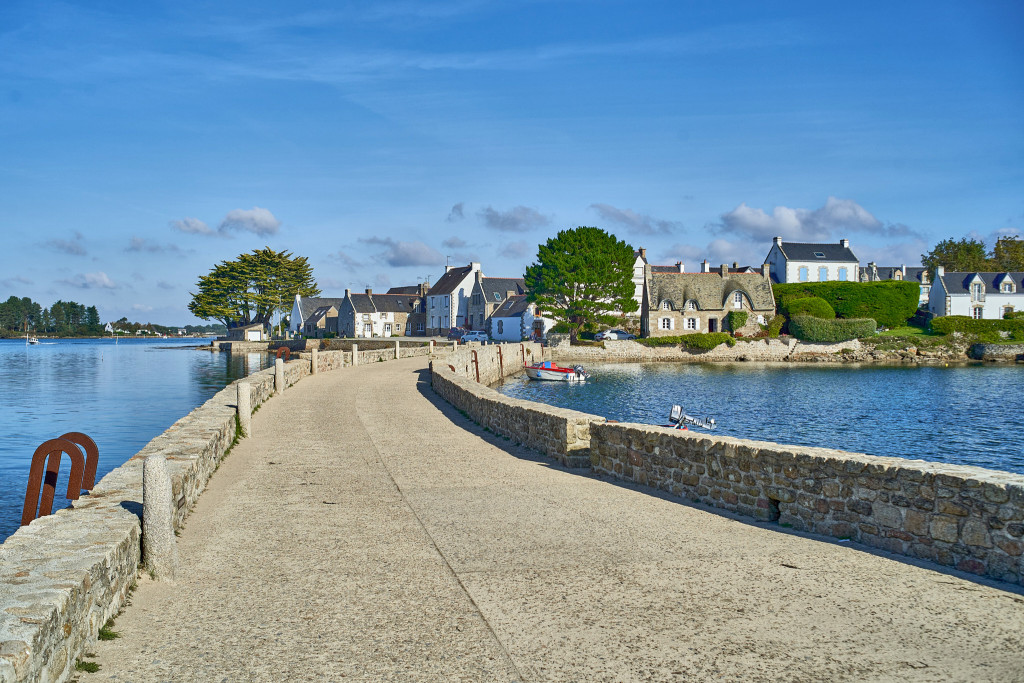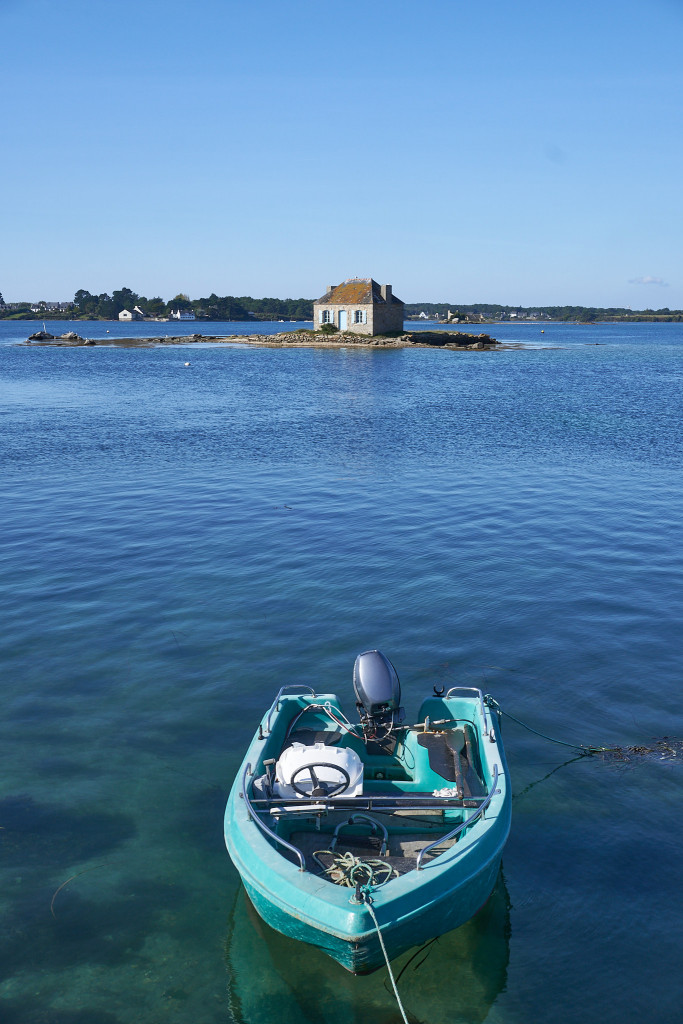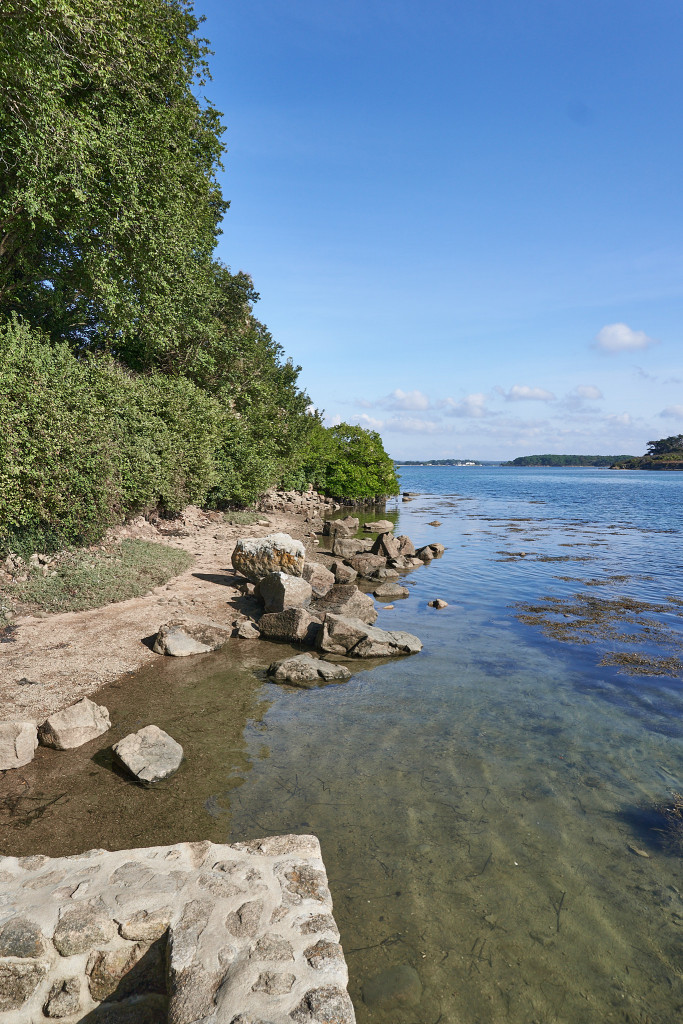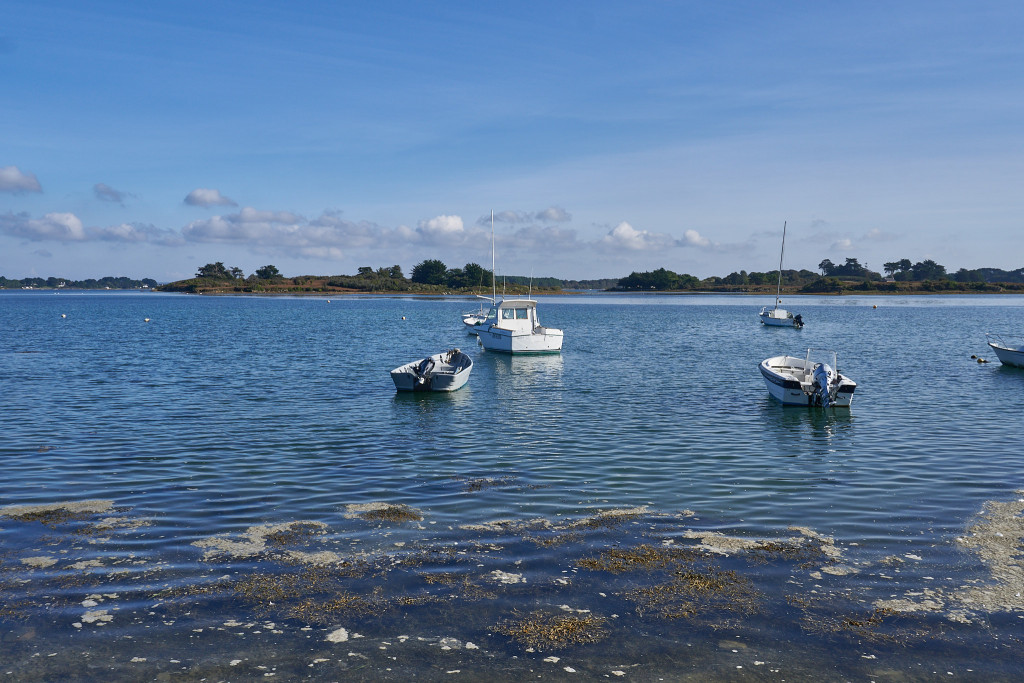Saint-Cado islet in Morbihan lies a few kilometres from Lorient. In the heart of the Etel river, connected to the land via a legendary stone bridge, the village is a hidden treasure of Brittany. It only takes about 15 minutes to walk around the Saint-Cado islet. The landscape has its magical setting, which has attracted us so much during our autumn trip to Brittany.
The stone bridge
The mystery of the tiny islet started from its legend. Legendary, it is said Saint Cado wanted a bridge to connect the inlet separated from the land by the Etel river but lacked the means. After negotiation between Saint Cado and the devil, the devil agreed to build a bridge in exchange for the soul of the one who would cross the bridge for the first time. But, the first passer-by was a cat!
Walking from the quay, the stone bridge looks massive compared to the inlet. From the stone bridge, you can see most houses of the Saint-Cado inlet. The wetland area at both sides of the bridge attracts many birds.


Little cottage with blue shutters (Nichtarguer)
Before entering the Saint-Cado, you won’t miss that little house with blue shutters. The former oyster farmer’s cottage on the rocky islet is picture perfect and on many postcards. There used to have many oysters former along the Étel river since the 1890s. But now, only less than 100 farmers are still producing around 3000 tonnes of oysters per year.
Heritage of Saint-Cado islet
The romantic walk on the islet starts in the centre of the islet, where visitors can admire some authentic fisherman’s stone houses and religious monuments.
Romanesque chapel
The tiny island has a Romanesque chapel from the twelfth century. The chapel has a western portal of the sixteenth century, a nave, aisles, and a choir of the Romanesque era. Many houses on the islet are around this little Romanesque chapel.
Calvary of Saint Cado
Calvary decorated with sculptures stands on a high porch accessed by stairs bordered by low walls. The platform is confined by four square piles with projecting cornices topped with balls. The base of the cross is in the form of a curved altar.
Fountain
The fountain below the chapel is accessible by the stone path. It is protected from the sea by a thick wall. The square-shaped basin is under a semicircular arch formed in the heart of a paired massif. On top of the arch, the building is surmounted by a more recent sculpted cross, depicting a crucifixion.



Walking path around the islet
We took the path below the chapel and walked around the island. The walkway offers a beautiful viewpoint onto the Etel River between oyster farms, forests, and small coves where colourful boats sail. It was worth spending time to enjoy the preserved natural landscapes and authenticity. The highest point of the islet would be two meters tall at high tide. I could imagine a breathtaking sunset view with the last golden rays trimming the sea. Les Algues Marines at the quay offers popular local food and is the perfect place to enjoy sunset views.


Travel tips for Saint-Cado Islet
Where to stay
Saint-Cado is a perfect base to explore Lorient, Vannes, and Quiberon. There is only one accommodation on the tiny islet. On the land side, there are a few hotels and one camping place. The following three hotels are all close to the stone bridge:
- Pierre et mer au cœur de Saint Cado
- Ty Cado
- Villa Aman An Ty
How to get there
The best way to get there is by car. Take the N165(E60), then D16 to Belz. From Belz, you drive on the local roads toward the Saint-Cado islet. There is a parking place just next to the waterfront. Visitors can walk to the stone bridge via the waterfront from the parking place.
